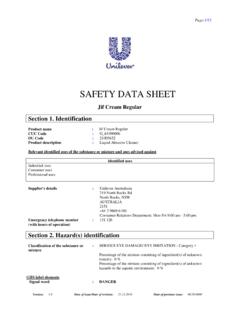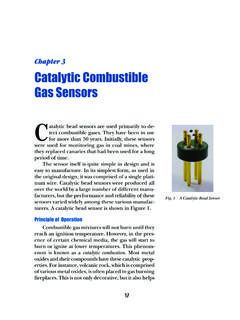Transcription of HANDBOOK FOR INQUIRY OFFICERS AND DISCIPLINARY …
1 HANDBOOK HANDBOOK HANDBOOK HANDBOOK FORFORFORFOR INQUIRY OFFICERS AND INQUIRY OFFICERS AND INQUIRY OFFICERS AND INQUIRY OFFICERS AND DISCIPLINARY AUTHORITIESDISCIPLINARY AUTHORITIESDISCIPLINARY AUTHORITIESDISCIPLINARY authorities 2013201320132013 GOVERNMENT OF INDIAGOVERNMENT OF INDIAGOVERNMENT OF INDIAGOVERNMENT OF INDIA INSTITUTE OF SECRETARIAT TRAINING AND INSTITUTE OF SECRETARIAT TRAINING AND INSTITUTE OF SECRETARIAT TRAINING AND INSTITUTE OF SECRETARIAT TRAINING AND MANAGEMENTMANAGEMENTMANAGEMENTMANAGEMENT (DEPARTMENT OF PERSONNEL & TRAINING)(DEPARTMENT OF PERSONNEL & TRAINING)(DEPARTMENT OF PERSONNEL & TRAINING)(DEPARTMENT OF PERSONNEL & TRAINING) MINISTRY OF PERSONNEL PUBLIC GRIEVANCES & MINISTRY OF PERSONNEL PUBLIC GRIEVANCES & MINISTRY OF PERSONNEL PUBLIC GRIEVANCES & MINISTRY OF PERSONNEL PUBLIC GRIEVANCES & PENSIONSPENSIONSPENSIONSPENSIONS ~~T~UmeshKumarftfilClIi.
2 'lq~~ ~~~INSTITUTEOF SECRETARIATTRAINING& MANAGEMENT~,~~~q~R~MINISTRYOF PERSONNEL,PUBLICGRIEVANCES& PENSIONS'qffifmm (GOVERNMENTOF INDIA)~~~,~.1:A.~.~(~)AdministrativeBloc k, (Old)~ ~ ~~DirectorTei.: 26185308,26185309 Telefax:261041 83 FOREWORDIn pursuanceof the recommendationsof the Committeeof Expertswhichwasset up to reviewthe procedureof DISCIPLINARY /VigilanceInquiries,the Departmentof Personneland Training(DOPT)had directedthe Instituteof SecretariatTrainingand Managementto bringout anupdatedHandbookfor SethuRamalingaman Ex-Facultyof ISTMin vigilancematterswhowas entrustedwiththis worksubmittedthe draftof the beentakento ensurethe accuracyandcorrectnessof the contentsin the HANDBOOK ,yet, in casethe readerscomeacrossany errorsor omissions,theymaykindlybringthe sameto thenoticeof this commentsor suggestionsfor the improvementof this handbookwill be ~~(UmeshKumar) am veryhappyto place'thishandbookin the handsof thankfulto the consultantandconcerneddivisionsof DOPTfor guidingthe processof preparationof FORHANDBOOK FORHANDBOOK FORHANDBOOK FOR INQUIRY OFFICERS AND DISCIPLINARY INQUIRY OFFICERS AND DISCIPLINARY INQUIRY OFFICERS AND DISCIPLINARY INQUIRY OFFICERS AND DISCIPLINARY AUTHORITIESAUTHORITIESAUTHORITIESAUTHORI TIES INDEXINDEXINDEXINDEX Chapter No.
3 TITLE Page Number 1. DISCIPLINARY Proceedings: Context and Overview 1-2 2. Role of DISCIPLINARY authorities 3-8 3. Constitutional Provisions Relating to DISCIPLINARY Proceedings 9-16 4. Principles of Natural Justice 17-24 5. Scope and Extent of Applicability of CCA Rules 25-31 6. Handling Complaints 32-34 7. Preliminary Investigation 35-40 8. Action on Investigation Report 41 9. Consultation with Central Vigilance Commission 42-56 10. Suspension 57-71 11. Minor Penalty Proceedings 72-75 12. Drafting and Issue of Charge Sheet 76-87 13. Appointment of Inquiring Authority and Presenting officer 88-91 14. Functions of INQUIRY officer 92-100 15. Role and Functions of the Presenting officer 101-110 16. Defence Assistant 111-113 17. Conduct of INQUIRY 114-123 18. Brief of the Presenting officer 124-131 19. Evaluation of Evidence 132-138 20.
4 Ex-Parte INQUIRY 139-143 21. Post Retirement Proceedings 144 -154 22. Common Proceedings 155-157 23. Borrowed and Lent OFFICERS 158-159 24. Report of Inquiring Authority 160-166 25. Action on INQUIRY Report 167-172 26. Consultation with the UPSC 173-176 27. Quantum of Penalty 177-184 28. Speaking Orders 185-190 29. Appeal, Revision and Review 191-200 30. Action on Receipt of Court Orders 201-204 31. Scope of Judicial Scrutiny 205-213 32. Sample Forms 214-239 1 CHAPTER 1 DISCIPLINARY PROCEEDINGS: CONTEXT AND OVERVIEW 1. Human resource is perhaps the most valuable asset of any organisation. It is the human resource which exploits other resources in the organisation so as to achieve the organisational objectives. The aim of the Human Resource Department, by whatever name it is known such as Personnel Department, P&IR, etc, is to get the best out of the human resource of the organisation.
5 For achievement of this purpose, there are many sub-systems in the Human Resource Department such as Grievance Handling, Counseling, Performance Appraisal, Career Planning, Training & Development, etc. Reward and Punishment system is one of the sub-systems under the Human Resource System. It is essential that every organisation, whether government or semi-government or private, should have a well established reward and punishment system to ensure that the people are made to work towards the fulfillment of the organisational goals. While the reward system will encourage the employees to work better towards the achievement of organisational goals, punishment system is used to prevent people from working against the organisational goals. 2. Misconduct, or non-conforming behaviour, as it is sometimes called, can be tackled in many ways such as counseling, warning, etc.
6 In extreme cases such as, criminal breach of trust, theft, fraud, etc. the employer is also at liberty to initiate action against the employee, if the misconduct of the latter falls within the purview of the penal provisions of the law of the land. However such proceedings generally conducted by the State agencies, are time consuming and call for a high degree of proof. In addition to the above option, the employer also has an option to deal with the erring employee within the terms of employment. In such an eventuality, the employee may be awarded any penalty which may vary from the communication of displeasure, to the severance of the employer-employee relationship dismissal from service. DISCIPLINARY authorities play a vital role in this context. Efficiency of the DISCIPLINARY authorities is an essential pre-requisite for the effective functioning of the reward and punishment function, more specifically the latter half of it.
7 3. There was a time when the employer was virtually free to hire and fire the employees. Over a period of time, this common law notion has gone. Today an employer can inflict punishment on an employee only after following some statutory provisions depending upon the nature of the organisation. Briefly, the various statutory provisions which govern the actions of different types of organisation are as under: (a) Government: Part XIV of the Constitution relates to the terms of employment in respect of persons appointed in connection with the affairs of the State. Any action against the employees of the Union Government and the State Governments should conform to these Constitutional provisions, which confer certain protections on the 2 Government servants. These provisions are applicable only to the employees of the various Ministries, Departments and Attached and Subordinate Offices.
8 Further, the employees, being citizens of the country also enjoy Fundamental Rights guaranteed under Part III of the Constitution and can enforce them though the Writ jurisdiction of the Courts. In addition to the constitutional provisions, there are certain rules which are applicable to the conduct of the proceedings for taking action against the erring employees. Central Civil Services (Classification, Control, and Appeal) Rules 1965 cover a vast majority of the Central Government employees. Besides, there are also several other Rules which are applicable to various sections of the employees in a number of services. (b) Semi Governmental Organisations: By this, we mean the Public Sector Undertakings and Autonomous Bodies and Societies controlled by the Government. Provisions of Part XIV of the Constitution do not apply to the employees of these Organisations.
9 However, as these organisations can be brought within the definition of the term State as contained in Article 12 of the Constitution, the employees of these organisations are protected against the violation of their Fundamental Rights by the orders of their employer. The action of the employer can be challenged by the employees of these organisations on the grounds of arbitrariness, etc. These organisations also have their own sets of rules for processing the cases for conducting the DISCIPLINARY proceedings against their employees. (c) Purely private organisations: These are governed by the various industrial and labour laws of the country and the approved standing orders applicable for the establishment. 4. Although the CCS (CCA) Rules 1965 apply only to a limited number of employees in the Government, essentially these are the codification of the Principles of Natural Justice, which are required to be followed in any quasi judicial proceedings.
10 Even the Constitutional protections which are contained in Part XIV of the Constitution are the codification of the above Principles. Hence, the procedures which are followed in most of the Government and semi-governmental organisations are more or less similar. This handout is predominantly based on the CCS (CCA) Rules 1965. 5. Complexity of the statutory provisions, significance of the stakes involved, high proportion and frequency of the affected employees seeking judicial intervention, high percentage of the cases being subjected to judicial scrutiny, huge volume of case law on the subject - are some of the features of this subject. These, among others have sparked the need for a ready reference material on the subject. Hence this HANDBOOK . 3 CHAPTER 2 ROLE OF DISCIPLILNARY authorities 1. Who is DISCIPLINARY Authority?









